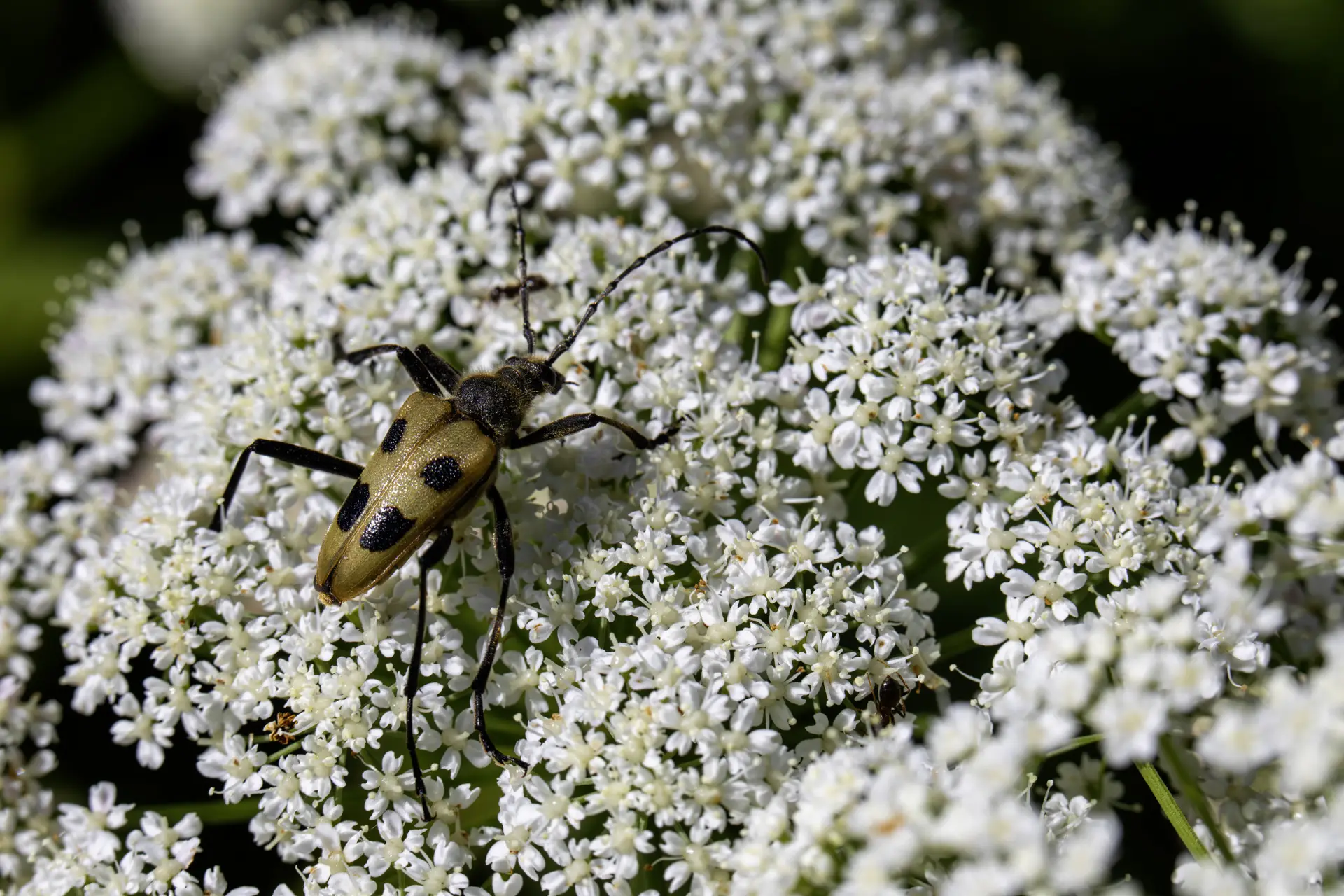Pachyta quadrimaculata, commonly known as the Four-spotted Longhorn Beetle, is a species of beetle in the family Cerambycidae. This species is noted for its distinctive markings and its role in the ecosystem as both a pollinator and decomposer.
Appearance
- Size: Adult beetles typically measure between 10 and 20 millimeters in length.
- Coloration: The beetle’s body is generally black or dark brown with four prominent yellow or cream-colored spots on the elytra (wing covers). These spots are usually positioned two on each elytron.
- Body Shape: Like other longhorn beetles, Pachyta quadrimaculata has an elongated body and long antennae that can be nearly as long as, or longer than, the body itself.
Habitat
- Preferred Habitats: This beetle is commonly found in deciduous and mixed forests, especially those with a good supply of rotting wood and dead trees. They can also be seen in meadows and areas with plenty of flowering plants.
- Geographic Range: Pachyta quadrimaculata is found across Europe and parts of Asia. Its range extends from the northern parts of Europe down to the Mediterranean regions.
Behavior
- Feeding: Adults primarily feed on pollen and nectar from various flowering plants, making them important pollinators. Larvae feed on decaying wood, contributing to the decomposition process.
- Reproduction: Females lay their eggs in dead or decaying wood, where the larvae will develop. The larvae are wood-borers, feeding on the wood as they grow and eventually pupate into adult beetles.
- Lifecycle: The lifecycle of Pachyta quadrimaculata involves complete metamorphosis, transitioning from egg to larva to pupa to adult. The larval stage can last one or more years, depending on environmental conditions and food availability.
Ecological Role
- Pollination: As adults feed on pollen and nectar, they help in the pollination of various plants, contributing to the health of their ecosystems.
- Decomposition: Larvae play a crucial role in breaking down dead and decaying wood, aiding in nutrient cycling and decomposition within forest ecosystems.
Interesting Facts
- Long Antennae: The long antennae of Pachyta quadrimaculata are used for sensing their environment and finding mates.
- Distinctive Markings: The four yellow or cream-colored spots on the elytra are distinctive and help in identifying this beetle species.
- Lifecycle: The larvae spend a significant amount of time in the wood, which can make them important indicators of forest health and the availability of dead wood resources.
Identification Tips
- Spot Patterns: The four spots on the elytra (two on each side) are key identifiers. The spots can vary slightly in size and shape but are usually quite distinctive.
- Body Shape and Size: Look for the typical longhorn beetle shape with an elongated body and long antennae. The size range of 10-20 millimeters is also a helpful characteristic.
- Habitat: Observing the habitat can also aid in identification, as these beetles are commonly found in forests with plenty of dead or decaying wood.
Summary
The Four-spotted Longhorn Beetle (Pachyta quadrimaculata) is a notable species within the Cerambycidae family, easily recognized by its distinctive spotted elytra. It plays an important ecological role as both a pollinator and a decomposer, contributing to the health and sustainability of forest ecosystems. Found across Europe and parts of Asia, this beetle is an interesting and beneficial component of its natural habitat.
Visited 937 times, 11 visit(s) today
Views: 1659
Subscribe to the newsletter:
